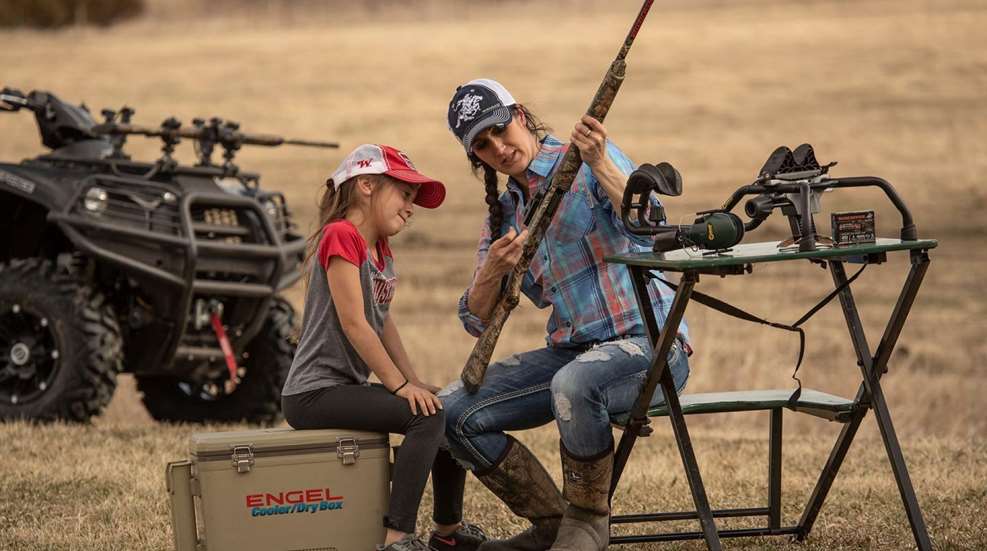
As I’ve grown older, the recoil of my over/under shotguns has gradually started to take its toll, especially when I’m shooting multiple rounds of skeet, trap or sporting clays. As a result, I began searching for a semiautomatic shotgun that would ease felt recoil. What I ended up buying was a shotgun that was not on my original list of choices—a 12-gauge, Winchester Model SX3 Sporting—but I’ve been very pleased with the gun’s overall performance for nearly a decade now.
That particular semiautomatic shotgun is soft-shooting because it has a gas operating system, making it and its ilk good choices for geezers like me or those on the other end of the shooting spectrum—youngsters or smaller women who are just beginning to take up shotgunning. But not all semiautomatic shotguns are alike. Some have an inertia-driven operating system, which, like the gas system, has its pros and cons. Let me explain…
Gas Operation
The way a shotgun’s gas operating system works is that some of the expanding gasses created by the burning gunpowder when a shell is fired are bled off to unload and then reload the gun. Those gasses push against a piston on the magazine tube, which then pushes a bar linked to the bolt, which opens the action. As the bolt moves rearward, it ejects the empty shell. The action’s carrier then lifts a fresh shell into place and a return spring pushes the bolt forward, loading the new shell into the firing chamber. This all happens within the blink of an eye. It’s that use of some of the expanding gasses to unload and reload the shotgun that results in less felt recoil for the shooter. The so-called “kick” of the shotgun becomes more of a push than a sharp jolt.
Inertia Operation
Inertia-driven shotgun operating systems make no use of expanding gasses. Rather, they have a two-piece rotary bolt that remains in place—of its own inertia—and actually locks tighter when the gun is fired and recoils backward. A spring inside the bolt compresses, then pushes the bolt backwards after the shot. The empty shell ejects on the backstroke, and when a return spring pushes the bolt forward a fresh shell is loaded. Again, this all happens nearly instantaneously.
Advantages and Disadvantages
So, if gas-operated shotguns offer less felt recoil, the choice of which semiautomatic shotgun to buy is a no-brainer, right? Hold on, it’s not quite that simple. Because gas-operated shotguns use hot gasses to unload and reload the gun, those same gasses cause carbon buildup and powder residue that must be removed more often than shotguns with inertia-operated systems. Inertia systems also have fewer parts, which translates into fewer parts to clean.
A good rule of thumb is to break down and thoroughly clean a gas-operated semi-automatic shotgun every 500 to 1,000 rounds—or possibly even more often. As you get to know your particular shotgun, you may find that it requires more or less cleaning to continue functioning properly.
Another downside to gas guns is that since they have pistons, links and springs attached to the magazine tube, their forearms tend to be a bit bulkier (thicker) than those of inertia-operated shotguns. As a result, inertia guns are usually lighter in weight, so are preferred by some shooters. They’re also famous for their reliability, running smoothly in conditions that might make a gas-operated semiautomatic shotgun balk—like waterfowl hunting in cold, wet weather.
So, gas-operated or inertia-driven? A good way to begin making that decision is to shoot both types of semiautomatic shotguns at a few clay targets before you buy. Then, once that determination has been made, you can move on to trying various brands and models of shotguns within that specific category. If you don’t know which operating system the semiautomatic shotgun has that you’re considering buying, don’t be embarrassed to ask. You can’t always tell by looking at the exterior of a shotgun.
One last piece of advice is to take your time and enjoy the journey when choosing a semiautomatic shotgun, gas-operated or inertia-driven, new or used. Employing that approach, you’ll learn a lot about shotguns during the process, whatever you ultimately decide.






































